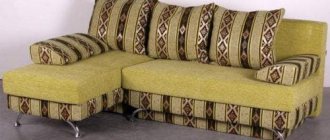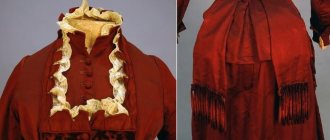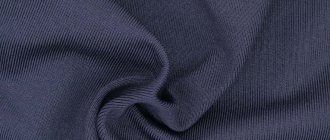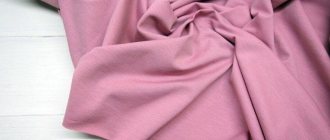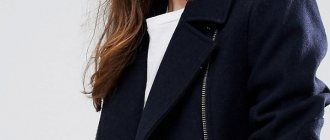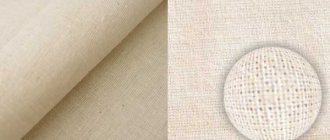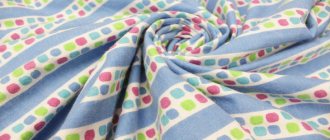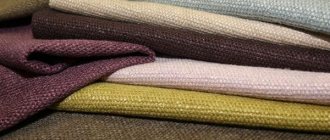A little history
Polypropylene is a fairly “young” material, born a little over 60 years ago. Now it is difficult to imagine how humanity could manage without it.
It all started with the fact that in 1953, German chemist Karl Ziegler developed a method for synthesizing polymer compounds from propylene gas. A few years later, a group of Italian scientists led by Professor Giulio Natta improved the system, speeding up the process of obtaining the material using catalysts.
By the beginning of the 60s of the last century, several factories were built in Europe and the USA to produce the new product. Since 1965, such enterprises have started operating in Russia. It is noteworthy that domestic chemists used their own innovative technology.
Since then, polypropylene and products made from it have confidently taken second place in the world among all plastics after polyethylene. Currently, improved catalysts are used for their production, which make it possible not only to reduce the cost of the final product, but also to produce it with predetermined properties.
The most famous nonwoven materials
Which non-woven fabrics are the most famous and are no less popular than other fabrics? It would not be a mistake if felt takes first place on this list. This name comes from the Turkic word ojlyk, which means bedspread. To make felt, sheep's wool was laid in layers and then subjected to mechanical pressure and high temperatures.
To put it simply, a layer of wool of the required thickness was rolled into a roll and rolled for a long time with hands and feet, alternating this procedure with exposure to steam. As a result, the hairs fell together, forming a durable fabric. The closest relative of felt is felt, which was made from rabbit and goat fluff, which is more delicate in structure. In the past, the process of making felt and felt was completely manual; nowadays, this process is entrusted to mechanisms.
Felt and felt have excellent thermal insulation properties and at the same time do not interfere with air circulation. Both materials make warm blankets and capes; these materials are used to insulate clothes and shoes. Some things can be completely felt, for example house slippers or felt boots.
Microfiber appeared relatively recently, in the 90s of the last century. It is made from polyester or polyamide and exists in two versions: woven textiles and its non-woven variety. Microfiber has a very soft surface and is highly hygroscopic. This material makes high-quality disposable and reusable wipes for cleaning and caring for items with sensitive surfaces, such as glasses and other optical instruments.
Fleece was obtained in 1979 by American chemists, who were awarded the Nobel Prize for their discovery. The raw material for the production of fleece is polyethylene terephthalate polymer, the fibers of which are bonded using a special technology. Fleece does not cause allergies, does not absorb moisture, is not flammable, is pleasant to the touch and retains heat perfectly. Fleece fabric is used to make winter sheets and pillowcases, thermal underwear, warm sweatshirts and hats, and it is also used to insulate raincoats, jackets and shoes.
Sintepon is one of the popular types of nonwoven materials based on polyester fibers. It is lightweight, hypoallergenic, dries quickly, and holds volume well. Synthetic winterizer is used to insulate jackets and is used as a filler for pillows and mattresses. It can be recommended to people who are allergic to natural wool and down.
Cellulose, or rather, non-woven fabric made from it of different thicknesses and densities. This material is superior to cotton in its ability to absorb moisture, so it is used in the production of sanitary pads, disposable diapers, dressings and cosmetic care products.
Peculiarities
The material is produced by weaving thin polypropylene threads on special weaving machines. A characteristic feature of the fibers is their extremely low density: 250 thousand meters of threads are obtained from 1 kg of raw materials - several times more than from any other synthetic product.
The main advantage of polypropylene fabric is the low cost of its production. In addition, it has the following important properties:
- strength. Products made from this fabric can withstand high mechanical loads. This makes it possible to use polypropylene containers repeatedly;
- environmental friendliness. Despite their chemical nature, the raw materials for the manufacture of polypropylene fabric are considered absolutely safe, as confirmed by relevant certificates. Therefore, such bags can be used for grain, cereals, sugar and other food products without fear of toxic fumes;
- resistance to temperature changes allows you not to worry about the safety of the packaging and contents when transporting goods from one climate zone to another;
- chemical resistance. The material is neutral in relation to any substances, therefore, even when storing aggressive drugs, it will not be able to react with them.
Interesting fact! Polypropylene fabric is produced in the form of a seamless sleeve, which completely eliminates the generation of waste during the manufacture of bags. Simply cut off a piece of the required length, turn the edge over and hem it with a double stitch. This provides additional strength, since the most vulnerable point in packaging is known to be the seams.
In addition to its advantages, polypropylene material also has disadvantages that limit its scope of application. This is, first of all, low water resistance, as a result of which the contents of the bags can get wet or become saturated with moisture. In addition, the fabric is difficult to dye and does not have sufficient frost resistance.
To overcome these properties, special additives are introduced into polypropylene that increase hydrophilicity, ultraviolet stabilizers and antifreeze. Some composite materials, for example, polypropylene with viscose or polyethylene, have improved characteristics. Sometimes lamination or reinforcement of polypropylene fabric is used.
Lamination
The process of lamination with a thin layer of polyethylene helps make the material waterproof. This is achieved due to the difference in the melting temperature of the two materials: for polypropylene it is 1700C, and for polyethylene it is only 1300C.
This procedure not only increases the moisture resistance of the packaging container. It gives it new additional properties:
- resistance to ultraviolet radiation;
- dustproof;
- increased strength;
- durability.
Thanks to lamination, the possibility of reusing bags and other containers increases. This significantly reduces the costs of enterprises for packaging products.
Reinforcement
In order to increase the strength of the polypropylene material, reinforcing threads or wire are woven into it at the manufacturing stage. This fabric becomes more rigid and can withstand greater mechanical loads.
Reinforced fabric is used in the construction of roads, railways, bridge-tunnel structures and even airport runways. It is believed that the use of reinforced polypropylene fabric increases the service life of overpasses by more than 10 times and significantly reduces the cost of their repair.
Interesting fact! Reinforced fabric is also used to create temporary roads, for example, to a facility under construction. In this case, a sufficient layer of crushed stone is poured onto it, without asphalting. When the need for the road disappears, the base is dismantled and reused at other sites.
Types of polypropylene fabric
Polymer materials and their classification
To increase the wear resistance of the material and expand its demand, reinforcement is used. Wire or reinforcing threads are introduced into the fabric structure. As a result, the tensile strength of the material is significantly increased.
Reinforced fabric is used in road construction work, in the construction of railway tracks and runways.
Polypropylene geotextiles
Woven geotextiles made of polypropylene are increasingly used in construction work. It is characterized by particularly high strength, as it is obtained by combining polyester and polypropylene fibers or strips.
Woven geotextiles are little susceptible to deformation, have good moisture impermeability and are successfully used in the construction of hydraulic structures, the development of steep slopes, and the construction of retaining walls.
Lamination of polypropylene fabric
Photo: laminated polypropylene fabric
Different polymers have different melting points. If polypropylene melts at 170°C, then polyethylene melts at 130°C. The difference in melting temperatures makes it possible to laminate polypropylene fabric with polyethylene film without qualitatively changing the structure of the base.
An excellent indicator of environmental safety plus all the best properties of polypropylene allow the material to be used at various production sites. Laminated polypropylene fabric has become the leader in materials for the packaging industry.
Lamination gives polypropylene fabric new properties:
- increased resistance to UV rays;
- good dust resistance;
- resistance to fractures;
- long service life;
- high strength;
- resistance to fading;
- resistance to chemicals.
Laminated fabric is often used:
- for packaging clothes, such material reliably protects against fading and high humidity;
- builders widely use it as a protective membrane on the roofs of houses.
The production of laminated fabric has made it possible to actively use secondary raw materials, which significantly increases the profitability of enterprises.
Primary and secondary propylene, transparent and colored polypropylene fabrics
The undoubted advantage of polypropylene is the possibility of its recycling. Modern recycling technologies help to obtain completely new high-quality material from recycled materials, which is successfully used in production. Technical polypropylene fabric made from recycled materials is not much inferior to a natural product. The cost of the material after processing is cheaper than that of virgin polypropylene.
In terms of its basic properties, the recycled material is quite close to the original one - it is durable, can withstand mechanical loads well, and is chemically stable. Among the disadvantages, low frost resistance should be noted.
Thanks to its excellent characteristics, transparent polypropylene fabric has proven itself well. It is quite resistant to damage and scratches and practically does not become cloudy over time. This braided polypropylene cannot be dyed without the use of special additives.
Colored fabric is made by adding various additives to the melt of raw materials. The final fabric can have any color. The material is not subject to the harmful effects of UV irradiation.
Colored polypropylene fabric
Variety of Applications
It is difficult to name areas of human activity where polypropylene is not used. The most important are the following:
- Construction. Possessing significant strength, polypropylene fabric allows water to pass through well. Therefore, it is laid under the foundation during the construction of buildings to evenly distribute the load and prevent soil subsidence. In addition, polypropylene bags are the best container for packaging construction waste. Broken bricks, pieces of concrete and other waste are poured into polypropylene hoses from any height and do not pollute the surrounding space.
- Agriculture. The main application of polypropylene fabric is the production of geotextiles. This is a material that is laid between different layers of soil to separate them. Such a layer, allowing water to pass to the plant roots, prevents weeds from breaking through to the surface, reducing weeding costs. Recently, polypropylene is often used in the construction of greenhouses and greenhouses. A laminated sheet spread on the soil warms it up before planting garden crops.
- Landscape design. It is impossible to do without polypropylene fabric when constructing ponds and swimming pools, alpine slides and high beds. It is used to strengthen slopes and create terraces, as well as to lay paths and park alleys. Another area of application is the creation of so-called green roofs. When forming a lawn, the fabric is placed in two layers: the first to protect the roof, and the second between the drainage and the ground.
- Transport. Awnings for trucks are made from polypropylene fabric and used as a covering material for railway transport. Railcar liners are widely used to prevent product loss during transportation. In addition, they protect bodies and wagons from dust, dirt and precipitation.
- Furniture manufacturing. Folding beds are made from durable polypropylene and used as upholstery for garden chairs, armchairs and hammocks.
- Rubber industry. It is known that rubber transported in rolls can stick together and lose its functional properties. You can get rid of this if you use polypropylene canvas as a gasket. This will significantly increase the shelf life of raw rubber and reduce costs.
- Medicine. Polypropylene fibers are used in the production of diapers and sanitary pads. Disposable syringes, droppers and inhalers are also made from this material.
- Electrical engineering. Polymer fabric is used as insulation in cable products.
- Mechanical engineering. In this industry, polymer canvases are used as a filter material for purifying oils and other technical liquids, as well as for removing harmful substances from industrial wastewater.
- Common consumption goods. The availability of raw materials and the ease of obtaining them make it possible to use polypropylene in the production of carpets, blankets, pillows, knitwear, bags, backpacks, outerwear fabrics and other products.
Interesting to know! Polypropylene, better than other materials, is able to remove increased moisture from the human body, so it is often used in the manufacture of special thermal underwear. However, you should remember that you cannot wear such clothes for a long time, since they dry out the skin and accumulate unpleasant odors.
Application of polypropylene fabric
Bronze-colored cellular polycarbonate: application features
It is difficult to identify an area where polypropylene fiber has not found its application. This material is successfully used to cover greenhouses; car covers are made from it. Currently, the development of artificially based fabrics that can replace wool is underway.
The main areas of use of polyester fabric:
- Packaging sphere - about a third of the material is used for the production of packaging products - polypropylene bags and big bags. Recently, the production of bags called “big-begs” has become widespread - these are large-volume bags with handles with which they can be carried and loaded. Polypropylene fabric for bags of this type is an ideal material; such bags are characterized by excellent wear resistance and are not susceptible to rotting or mold.
- Agriculture – geotextiles are used to separate different layers of the earth;
- Heavy industry – widely uses polypropylene filter fabric. A filter device made of filter fabric allows for thorough purification of contaminated liquids, depending on the density of the matter. The fabric has found application in the purification of various oils and industrial waste. Polypropylene filter fabric is capable of providing the required degree of purification without structural changes under the influence of water.
- Construction. Geotextiles are actively used to protect building structures from the root system of various vegetation, to strengthen spurs, and are used for soil substrates in road construction. In Poland and Lithuania, the law stipulates the mandatory use of geotextiles in road construction.
- In the furniture industry, polypropylene fabric has found its use as a good upholstery material and as awnings for cots;
- Transport – awnings for trucks are made from polypropylene fiber;
- Household sector - production of rugs, backpacks, bags, fabrics for outerwear, thermal underwear.
The canvas also found its niche in the railways, tire production, and medicine.
To summarize, it can be noted that polypropylene fabric is a universal material that copes well with the assigned tasks.
Polypropylene container
So, polypropylene is a truly universal material that has found application in many industries. But more than 30% of raw materials go into the production of packaging bags and containers.
In recent years, products called “big bags”, which are large bags with slings with which they are loaded, have become especially popular. They are used for transportation and storage of bulk food and non-food products: fertilizers, animal feed, sand, cement, plaster mixtures and many other materials. The carrying capacity of such soft containers ranges from 500 kg to one and a half tons.
The ease of big bag packaging allows you to avoid difficulties when loading and unloading onto road or rail platforms. Made from polypropylene, they have increased strength and abrasion resistance, and are resistant to rotting and mold.
To move cargo packaged in bags of 25 or 50 kg, another polypropylene container is used - a “sling bag”. Such group packaging allows you to optimize the costs of loading and unloading operations and reduce the cost of goods. Laminated fabric is used for products, which eliminates the possibility of the products getting wet. In case of increased load capacity, reinforced fabric is used.
Interesting to know! Even the most highly durable materials have a limited service life, and sooner or later the question of their disposal arises. Used polypropylene bags and other containers are crushed in special shredders. The resulting crumbs are sent for processing, thereby giving the polypropylene fabric a second life.
Modern chemical production is in continuous development. New technologies are constantly being developed, new materials appear. But polypropylene still remains the leader among polymers. No wonder it is deservedly called the “king of all plastics.”
Polypropylene fabric: characteristics
Polypropylene fabric is produced from polypropylene thread on a circular loom using the shuttle method.
The use of the latest technologies ensures the production of high quality fabric, which is applicable in a wide variety of production areas. Polymer fabric is produced in the form of sleeves without seams, which are the basis for further sewing of polypropylene bags, containers, big bags and other packaging containers.
Density of polypropylene fabric
Polypropylene fabric produced has the following parameters:
Fabric characteristics:
- Sleeve wound on the spool: 7.6 cm in circumference.
- Roller weight: about 150 kilograms.
- Meterage and weight: marked individually on all rolls.
- Polypropylene fabric sleeve, width: from 0.5 to 1.5 m.
- Density of PP (polypropylene fabric): varies at the buyer’s choice from 55 to 100 g/m2.
Resistance of polypropylene fabric to chemicals
According to its properties, polypropylene fabric is neutral to chemicals, including aggressive ones: the polymer fabric does not create reactions with chemical materials. As a result, polypropylene packaging containers are optimal for storing and transporting a wide variety of goods, including the chemical industry.
Strength of polypropylene fabric
Packaging containers made from polypropylene materials are very popular among manufacturers in a wide variety of industries, as well as transport companies and cleaning companies due to the high strength of polypropylene fabric.
The low cost of the bags, which was appreciated by utility services, also played an important role in this. Despite its low cost, polypropylene fabric can withstand enormous mechanical loads.
Unlike many packaging containers, our polypropylene bags have only one seam, and there are no side joints. Thanks to this, polymer big bags are practically waste-free during production and have increased strength. Moreover, the seams of the containers undergo multi-phase testing, just like the bags themselves - at the testing stage, and also comply with all GOSTs of the Russian Federation.
Polypropylene fabric color
Polypropylene fabric is produced in wide color variations. This became possible thanks to the application of a special dye to polymer granules.
Extra options
Optionally, an additional protective laminated layer can be applied. This provides even greater resistance to adverse external influences such as moisture, dust, etc. and guarantees the safety of your cargo.
